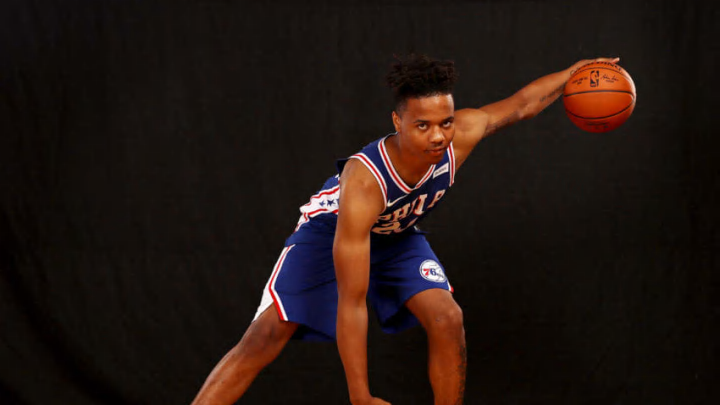
Philadelphia 76ers rookie Markelle Fultz could be handed an important role during his first season: late-game closer.
As far as young cores go, few are comparable to the Philadelphia 76ers. Joel Embiid emerged as one of the best centers in the league last season, while the last two No. 1 picks will both be making their debut in October. When you throw names like Dario Saric and Timothe Luwawu-Cabarrot into the mix, it’s difficult to deny the Sixers’ spot atop any such rankings.
With such a young team, however, closing games can be a challenge. Most youngsters aren’t afforded a significant role right away, while nerves can often get the best of less experienced players down the stretch of games.
More from Sixers News
- 3 Sixers players who could help Team USA Basketball
- 76ers 2k24 ratings: 3 most underrated players on Philadelphia roster
- 76ers head coach Nick Nurse bares lofty plans for Paul Reed this season
- Grade the Trade: 76ers swap Tobias Harris for superstar PG in mock deal
- Breaking Down Bombshell Report on Sixers Star James Harden
The role of late-game closer normally gets handed off to one of the veterans on the roster, as poise and control is two-thirds of the battle when attempting to fire off shots late.
Philadelphia doesn’t have that luxury, though, as J.J. Redick isn’t the type of isolation threat that can be relied upon in crunch-time possessions. He’d be wholly effective when operating in set plays, but teams don’t always have the ability to run full-blown actions in those scenarios.
The leaves it up to three players: Joel Embiid, Ben Simmons or Markelle Fultz.
As our own Roger Acker deduced on Saturday, Fultz is likely best option out of that trio to carry an offense late in games. The reason why is easy to see once you look at the most basic of film.
Late-game scenarios typically boil down to which team can produce more in isolation. While ball and player movement has become the staple of modern basketball, teams will throw system aside in an effort to get their best players the ball when the game matters most. Whether or not that’s the best method is debatable, but that’s almost always how those situations shake out — whether it’s the coach’s game plan or not.
As Kevin O’Connor of The Ringer pointed out, the fourth quarter typically sees a spike in iso-ball — even from the best teams in the league:.
The clock gets turned back late in games. The frequency of isolation possessions increases, per Synergy. ➡ https://t.co/BVqMQjPGv2 ⬅ @ringer pic.twitter.com/GQW0gvNWNf
— Kevin O'Connor (@KevinOConnorNBA) May 30, 2017
That’s precisely where Fultz comes into the picture.
